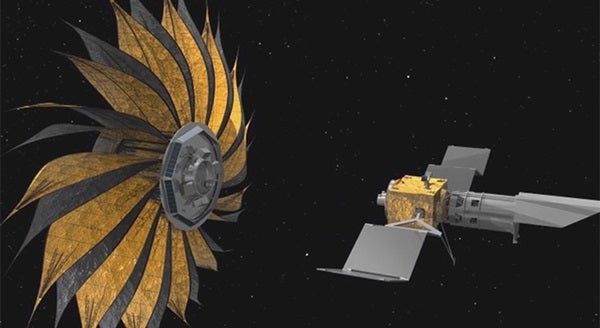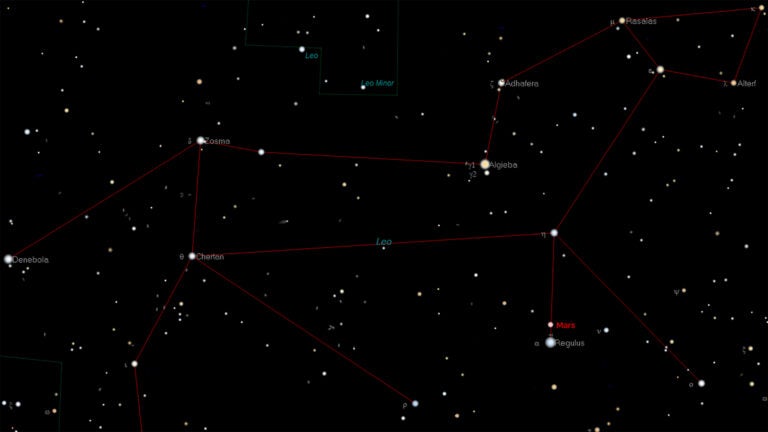The hunt is on for planets that resemble Earth in size, composition, and temperature. Rocky planets with just the right temperature for liquid water — not too hot, not too cold — could be possible abodes for life outside our solar system. NASA’s Kepler mission has discovered hundreds of planets orbiting other stars, called exoplanets, some of which are a bit larger than Earth and lie in this comfortable “Goldilocks” zone.
Researchers generally think it’s only a matter of time before we find perfect twins of Earth. The next step would be to image and characterize their spectra, or chemical signatures, which provide clear clues about whether those worlds could support life. The starshade is designed to help take those pictures of planets by blocking out the overwhelmingly bright light of their stars. Simply put, the starshade is analogous to holding your hand up to the Sun to block it while taking a picture of somebody.
The proposed starshade could launch together with a telescope. Once in space, it would separate from the rocket and telescope, unfurl its petals, then move into position to block the light of stars.
Embedded video from
NASA Jet Propulsion Laboratory California Institute of Technology










